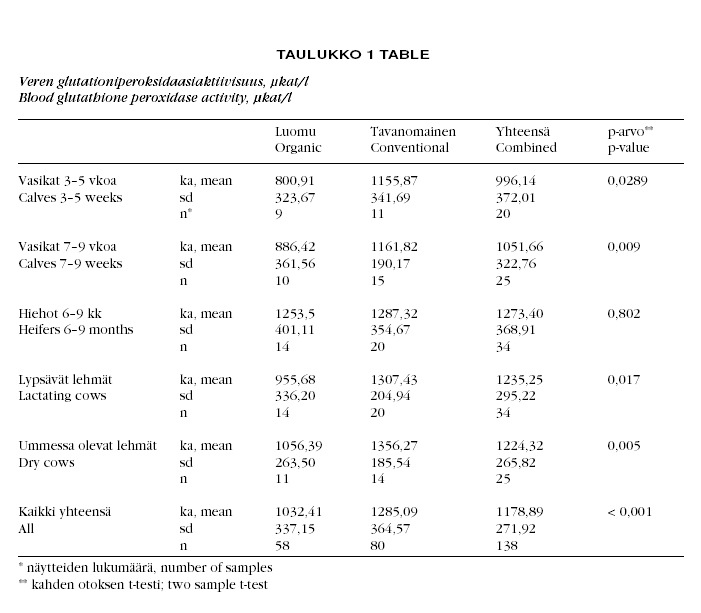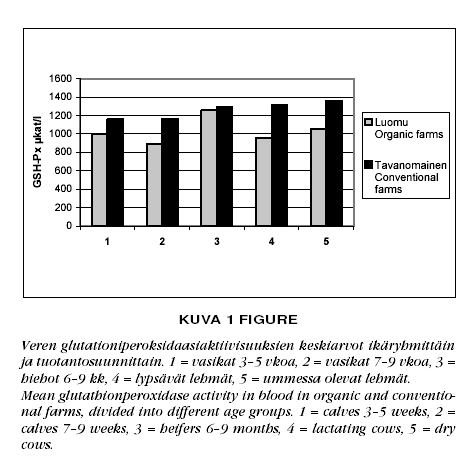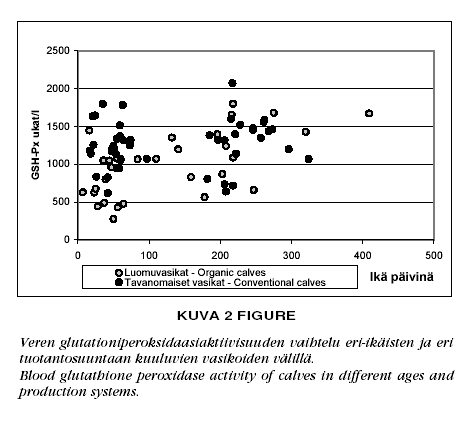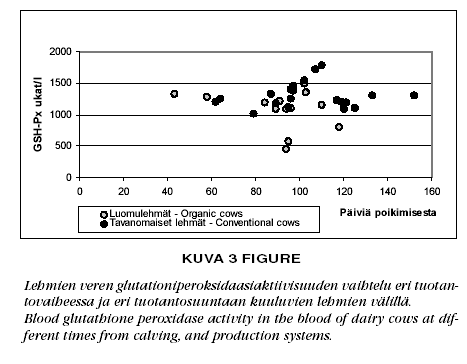
Selenium is an essential trace element for animals. Forages in Finland are generally low in selenium, and therefore, selenium is added to fertilizers. The use of industrially produced fertilizers in organic farming is restricted, and organic forages are found to contain less selenium than the conventional. Selenium content in milk depends on its concentration in the cow’s plasma. Selenium supply of a milkcalf, is therefore, dependent on its dam’s selenium status. Calves in organic herds are fed with whole milk until the age of three months. In conventional herds, the whole milk is changed earlier into industrial milk-replacer fortified with essential trace elements. We studied the selenium status in dairy herds in South-Savo by measuring the glutathione peroxidase activity in blood. Selenium concentration in blood, measured as glutathione peroxidase activity, was adequate in most of the animals. Glutathione peroxidase activity was significantly lower in every age group, except heifers, when organic and conventional herds were compared. Glutathione peroxidase activity was lower than recommended in six percent of animals, which were all from organic herds. Selenium status in these animals didn’t, nevertheless, indicate clear selenium deficiency. According to our questionnaire, the animals in the organic dairy herds didn’t have more signs indicating selenium deficiency than the conventional. Probably the animals do not have signs of selenium deficiency when the selenium status is still moderate. Selenium supply should be checked if deficiency is suspected.



